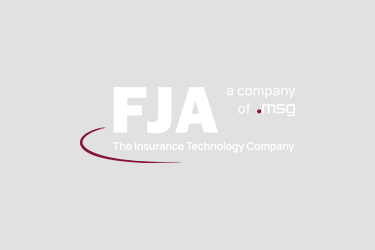Over time most industries pass through a well-defined series of stages, from growth to maturity and eventually into decline. Companies typically fail when their strategy no longer fits the environment in which they operate. The competitive landscape within the insurance industry is such that the success of one company’s strategy depends on their rival’s ability to respond. New market entrants are placing additional pressure on carriers by using technology to transform the industry forcing insurance companies to modernize their systems infrastructure. However, any competitive advantage based merely on product, price even the use of technology is transitory since they are visible to the market and can easily be copied. As technology innovation, higher customer expectations and disruptive newcomers redefine the marketplace, insurance companies must work to keep their distinctive competencies.
As technology innovation, higher customer expectations and disruptive newcomers redefine the marketplace, insurance companies must work to keep their distinctive competencies.
A distinctive competency refers to a unique strength that allows a company to achieve a competitive advantage. Distinctive competencies arise from two complimentary sources: a company’s resources and capabilities. Successful strategies often build on a company’s existing distinctive competencies and help a company develop new ones. Durability of competitive advantage is achieved by establishing barriers to imitation. The longer it takes a competitor to imitate your distinctive competencies the greater the opportunity to build a strong market position and improve or build new competencies. Research suggests that imitating capabilities is most difficult because capabilities are based on the way decisions are made and processes managed deep within an organization – they are invisible to outsiders.
The longer it takes a competitor to imitate your distinctive competencies the greater the opportunity to build a strong market position and improve or build new competencies.
When it comes to insurance, distinctive competencies have developed out of necessity oftentimes in the form of individual heroics in order to work around aged or obsolete systems infrastructures – these resulting workarounds or processes have become codified and often lead to unique capabilities differentiating one carrier from another. It is important that they be preserved. However, as carriers seek to modernize their systems infrastructure there is a risk that they will do so at the expense of losing what has differentiated them among their rivals. The more the insurance carriers standardize processes and behave alike the more commoditized their products and services will become potentially paving the way for new market entrants to steal market share.
…as carriers seek to modernize their systems infrastructure there is a risk they will do so at the expense of losing what has differentiated them among their rivals.
Most of the software being deployed in these modernization or digital transformation efforts require the insurance company adopt standardized workflow in order to automate specific processes. These standardized processes and workflow are industry agnostic and based on what the software company has determined to be “best practices” normally confined to functional areas such as Sales, Marketing, Service, and Procurement. They were not developed contemplating processes and capabilities unique and critical to the insurance industry such as underwriting.
Underwriting is considered the very heart of the decision making process that protect the insurance company from acquiring non profitable business. The decision –making process has to be balanced with the necessity of accepting well understood risk in order to grow the business and maintain acceptable growth rates. This balancing act often requires a significant amount of creativity from the underwriter and is precisely the point at which an insurance company’s distinctive competency is derived. It is the skill of understanding the data and statistics and guidelines provided by actuaries that enable underwriters to predict the likelihood of most risks. These are process and decision making capabilities buried deep in the organization and hidden from the market – they often facilitate an enduring competitive advantage for the insurer.
This balancing act often requires a significant amount of creativity from the underwriter and is precisely the point at which an insurance company’s distinctive competency is derived.
The analytics revolution ushered in by big data, and the integration of predictive and other statistically based models provide the insurance company with new opportunities to differentiate themselves among their peers. When combined with prevailing codified, heuristic underwriting rules, underwriters can become masters of many trades. They will therefore have a broader portfolio of accountabilities and involvement in more customer-facing processes than they have today. Preserving and codifying their unique capabilities around decision-making will not only enable underwriters to continue making an impact on both the top and bottom line but will facilitate keeping the insurance company relevant and distinguished in the future as these analytic tools get deployed. For example:
- A current distinctive competency with analyzing information on insurance applications could easily evolve into a distinctive competency with proposal review in an integrated sales and underwriting portal where premiums, terms and conditions, as well as notes, can be updated in real-time improving channel response and facilitating increased sales volume.
- An existing and distinctive competency with how actual experience is analyzed to determine the right price for a particular risk can easily adapt into new distinctive competency to include processes and tools that refine the rating model by evaluating how experience compares to expectations across multiple dimensions, and apply that rating. This could also lead to a distinctive competency with pricing each product component separately, understanding the savings from multiple products for the same insured, and the related discounting that can be offered facilitating new product bundling and growth opportunities.
- A distinctive competency with census data management could naturally progress to a distinctive competency of applying the organizations unique decision making process to figure out which demographic is buying certain products as well as help underwriters understand where gaps in product availability exist, create a product that meets that need, and directly market it to the people that match the demographic.
Given the mature nature and competitive intensity of the insurance industry it is imperative that insurance companies protect their distinctive competencies and not arbitrarily relinquish them to someone else’s best-practices. By preserving that which makes them unique, insurers can significantly improve their prospects to grow their top line and effectively respond to changes in the market with differentiated capabilities.
Related Posts
March 17, 2021
Priorities for Insurers in a Post COVID-19 World
COVID-19 has dramatically changed the way customer’s view, buy and assess the…
January 6, 2021
Steering Insurers Ahead in the Digital Era
FJA was named one of the Top 10 Underwriting Solutions of 2020.
September 21, 2020
Build or Buy Software? How Insurance Companies Can Preserve Value
As a former management consultant I was often faced with the question: Build or…


